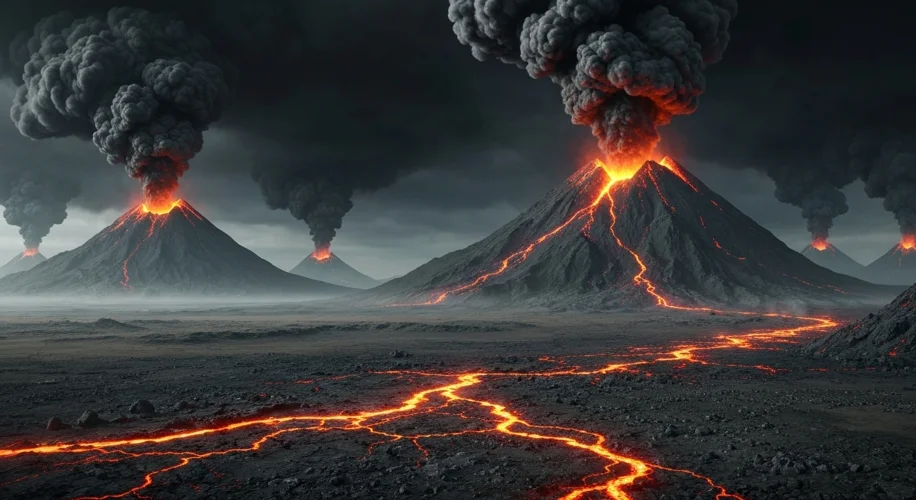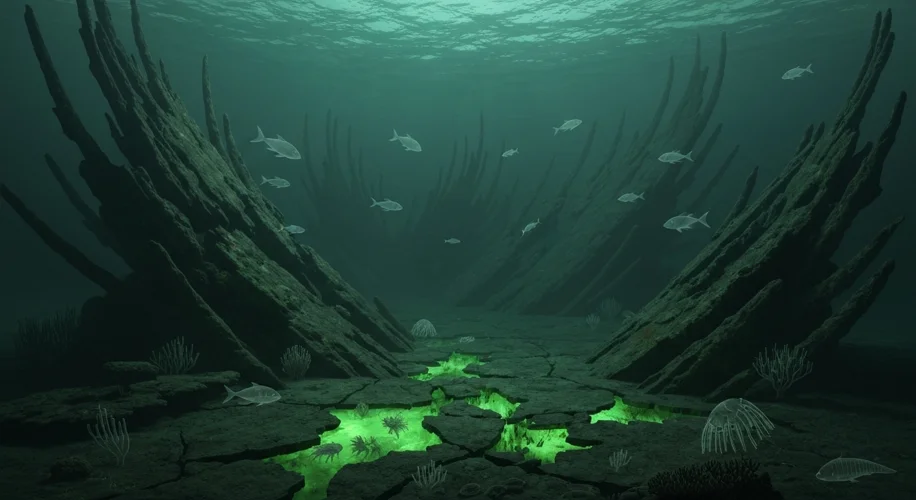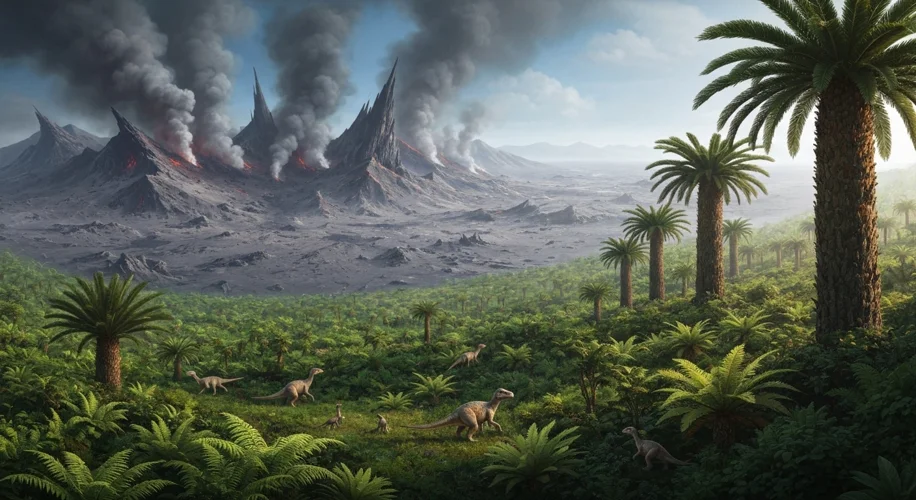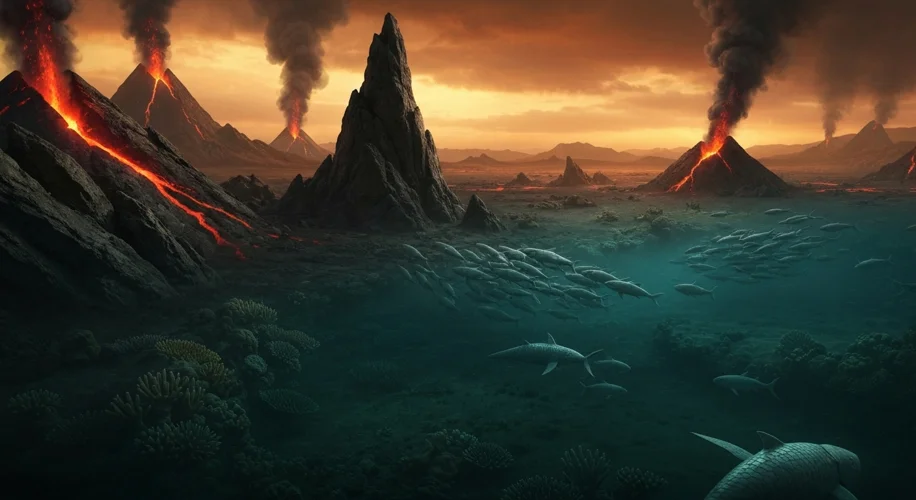The year is roughly 252 million years ago. Life on Earth, as it existed then, was teetering on the brink, unaware of the cataclysm that was about to be unleashed. Imagine a world vibrant with unique marine life, a bustling oceanic ecosystem that had evolved over millions of years. Then, with a roar that would echo through geological time, the planet began to unravel.
This was the Permian-Triassic extinction event, often called ‘The Great Dying’ for a grimly fitting reason: it was the most catastrophic mass extinction Earth has ever witnessed. Over 96% of all marine species and 70% of terrestrial vertebrate species vanished. The oceans, the very cradle of life, turned into a deadly soup, boiling and suffocating those within.
What triggered such utter devastation? The prime suspect, scientists believe, is massive volcanic activity in an area known today as the Siberian Traps. Enormous eruptions, spewing out unprecedented amounts of lava and gases, began a chain reaction of environmental collapse. Think of it as Earth’s ultimate fever.

These volcanic eruptions released colossal quantities of carbon dioxide and methane into the atmosphere. These greenhouse gases acted like a blanket, trapping heat and causing global temperatures to soar. The oceans, absorbing much of this heat and excess carbon, began to warm dramatically. This warming led to a cascade of deadly consequences.
One of the most devastating impacts was ocean anoxia. As the water warmed, its ability to hold dissolved oxygen plummeted. Simultaneously, the increased volcanic activity released sulfur compounds, which could have fueled the growth of anaerobic bacteria. These bacteria thrived in oxygen-poor environments, producing hydrogen sulfide – a potent toxin. Imagine the once-clear seas turning cloudy and toxic, with pockets of lethal gas building up.
The consequences were immediate and horrific for marine life. Creatures that relied on oxygen to breathe began to suffocate. Shell-forming organisms, like corals and mollusks, found their shells dissolving in the increasingly acidic waters, a direct result of the oceans absorbing massive amounts of CO2. This acid dissolved the very calcium carbonate that formed their protective homes. Reefs, vibrant cities of the sea, crumbled into dust.

On land, the picture was not much brighter. The rapid climate change brought about extreme weather events. Forests withered under prolonged droughts, while flash floods ravaged landscapes. The very air became thick with volcanic ash and toxic gases, making survival a daily struggle. Even the creatures that somehow survived the initial onslaught faced starvation as ecosystems collapsed.
The Great Dying wasn’t a swift event; it was a protracted agony. The full extinction pulse likely lasted for tens of thousands, perhaps even hundreds of thousands, of years. For the survivors, it was a world forever changed, a brutal lesson in the fragility of life.
Yet, from this desolation, life persisted. The survivors, though few, were the hardiest, the most adaptable. The vacuum left by the extinct species allowed new forms to evolve. Among the survivors were small, shrew-like mammals, ancestors of the dinosaurs and eventually, us. The Triassic period, which followed this extinction, saw the rise of the dinosaurs, a testament to life’s tenacious ability to find a foothold even after the most profound devastation.

The Permian-Triassic extinction event serves as a stark reminder of Earth’s dynamic and sometimes violent history. It underscores the profound interconnectedness of Earth’s systems – how volcanic activity can trigger atmospheric changes, which in turn alter ocean chemistry, leading to the near-total collapse of life. As we look at our own planet today, grappling with climate change and its potential consequences, the echoes of the Great Dying resonate with a chilling relevance, a geological cautionary tale written in the fossil record.

